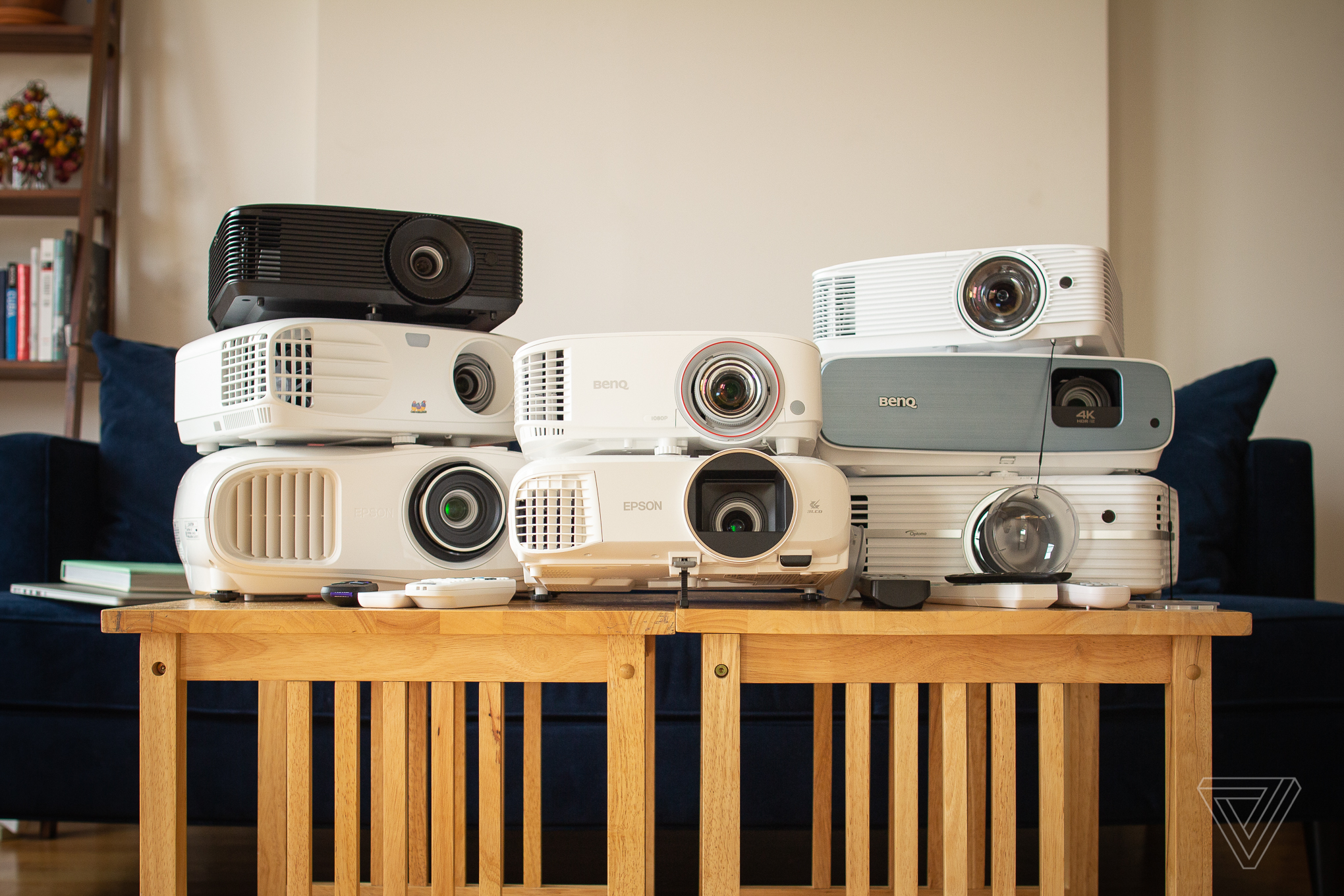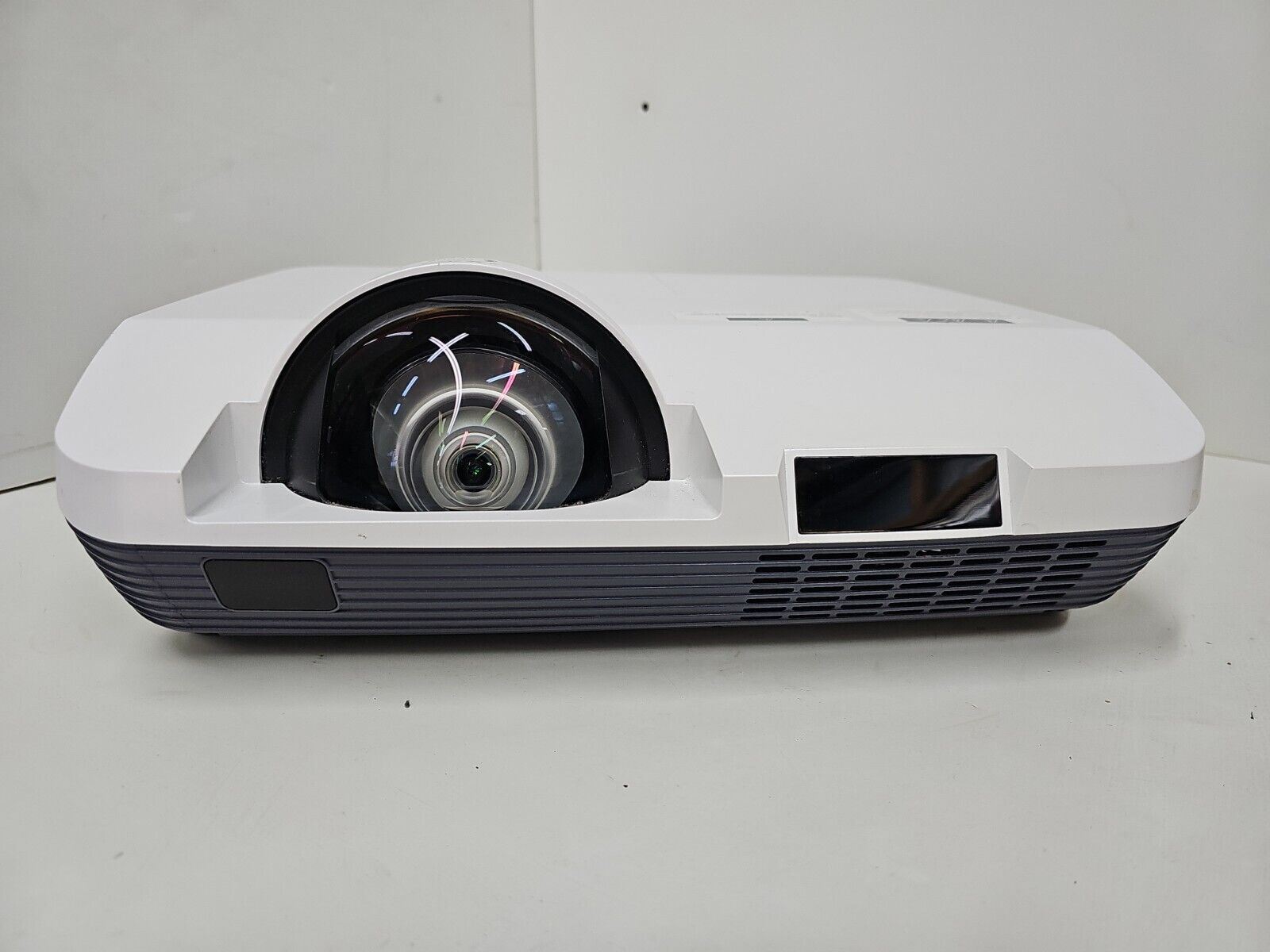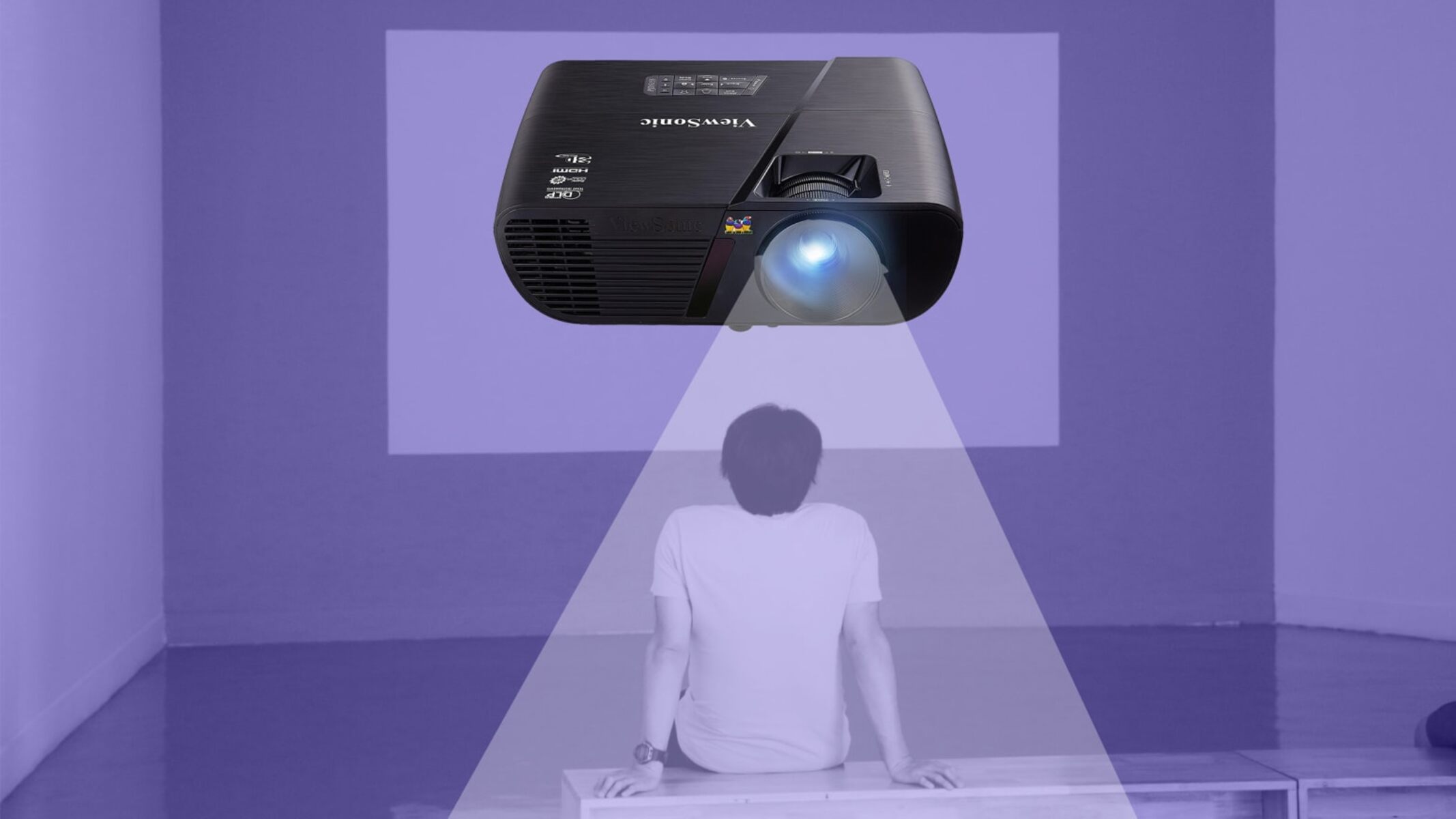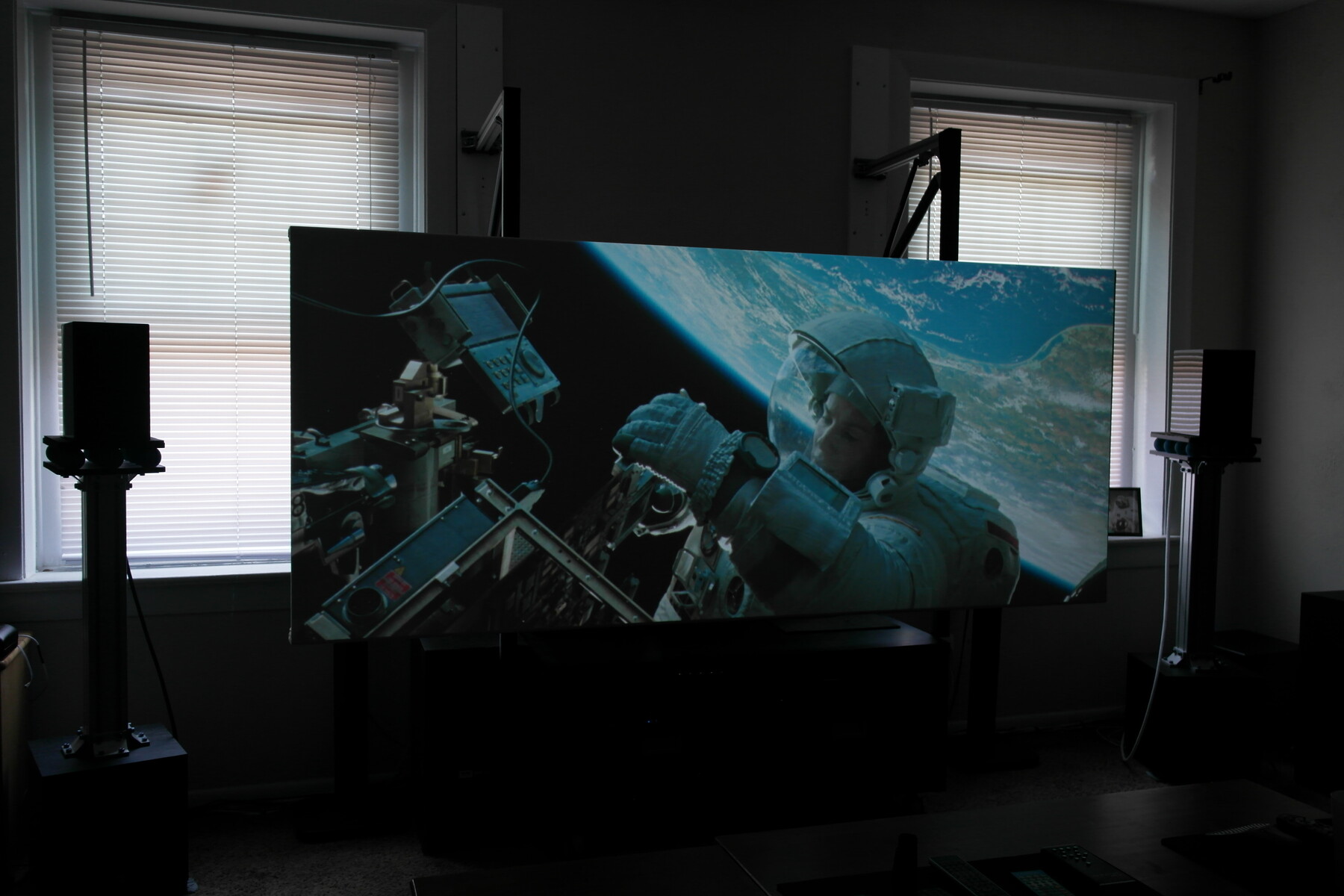Introduction
When it comes to projecting images and videos onto a screen, projectors are the go-to choice for many. They offer a larger display compared to traditional televisions and are widely used in various settings, including classrooms, conference rooms, and home theaters. Over the years, there have been significant advancements in projector technology, with LCD (Liquid Crystal Display) and LED (Light Emitting Diode) projectors emerging as popular options.
Both LCD and LED projectors have their own set of advantages and disadvantages, making it important for consumers to understand the differences between the two. Whether you’re a business professional looking for a projector for presentations or a movie enthusiast who wants to create a home theater experience, choosing between an LCD and LED projector requires careful consideration of various factors.
In this article, we will provide a comprehensive comparison between LCD and LED projectors, highlighting the pros and cons of each technology and helping you make an informed decision.
What is a projector?
A projector is an optical device that projects an image or video onto a larger surface, such as a screen or wall. It works by using light and lenses to magnify and display the image. Projectors have become an essential tool in various domains due to their ability to create a large display and enhance visual experiences.
Projectors are used in a wide range of applications, including classrooms, boardrooms, movie theaters, home theaters, and even outdoor events. They offer a convenient way to showcase presentations, movies, slideshows, and other multimedia content to a larger audience.
Traditionally, projectors used technologies like CRT (Cathode Ray Tube) that involved beams of electrons to create an image. However, with advancements in technology, LCD and LED projectors have become the preferred choices for their improved performance and compact design.
LCD projectors utilize Liquid Crystal Display technology, where light passes through liquid crystals to produce the desired image. On the other hand, LED projectors use Light Emitting Diodes that emit light directly to create the image. Both technologies have their own unique features and benefits.
Now that we have a basic understanding of what a projector is, let’s delve deeper into the specifics of LCD and LED projectors to understand their differences and determine which one might be the better choice for your needs.
What is an LCD projector?
An LCD (Liquid Crystal Display) projector is a type of projector that uses a combination of liquid crystal panels and light sources to project images onto a screen or surface. It is a popular choice in various settings due to its excellent color reproduction, high image quality, and wide compatibility with different media sources.
The operation of an LCD projector involves three liquid crystal panels, each representing one primary color: red, green, and blue. These panels control the polarization of light passing through them to create a full-color image. The light source, typically a powerful lamp, passes through these panels and is then projected onto the screen, producing a vibrant and detailed image.
One of the key advantages of LCD projectors is their ability to display bright and sharp images, making them ideal for environments with moderate ambient light. This makes them suitable for classrooms, conference rooms, and other well-lit spaces where image clarity is vital.
Additionally, LCD projectors are known for their wider color gamut, which means they are capable of representing a broader range of colors. This makes them an excellent choice for applications that require accurate color reproduction, such as graphic design, photography, and video editing.
Another benefit of LCD projectors is their compatibility with a wide range of media sources and formats. They can easily connect to computers, laptops, DVD players, gaming consoles, and other devices through various input ports, such as HDMI, VGA, and USB. This versatility allows users to project content from virtually any source, making LCD projectors highly adaptable to different needs and requirements.
However, there are some limitations to LCD projectors. One common issue is the “screen door effect,” where the individual pixels of the display become visible when viewed up close. This effect can detract from the overall image quality, especially when projecting smaller fonts or detailed graphics. Additionally, LCD projectors may require regular lamp replacements, as the lamps tend to have a limited lifespan.
Overall, LCD projectors offer remarkable image quality, vibrant color reproduction, and wide compatibility, making them a popular choice in many professional and educational settings.
Advantages of LCD projectors
LCD (Liquid Crystal Display) projectors offer several advantages that make them a popular choice in various professional and educational settings. Let’s explore some of the key advantages of LCD projectors:
- Excellent color reproduction: LCD projectors are known for their accurate and vibrant color reproduction. With a broad color gamut, they can accurately display a wide range of colors, making them ideal for applications that demand precise color representation, such as graphic design, photography, and video editing.
- High image quality: LCD projectors produce sharp and detailed images, thanks to their ability to display high resolutions. Whether you’re presenting slides, videos, or multimedia content, an LCD projector ensures that the visuals appear clear and visually appealing to the audience.
- Bright display: LCD projectors are known for their brightness, making them suitable for well-lit environments. They can project bright images, allowing viewers to clearly see the content without any loss of visibility, even in ambient lighting conditions. This makes them ideal for classrooms, conference rooms, and other spaces with moderate ambient light.
- Wide compatibility: LCD projectors offer versatile connectivity options, allowing users to connect various media sources and devices. With input ports such as HDMI, VGA, and USB, LCD projectors can easily connect to computers, laptops, DVD players, gaming consoles, and more. This enables users to project content from different sources, providing flexibility in multimedia presentations.
- Lower cost: Compared to other projector technologies like DLP (Digital Light Processing), LCD projectors tend to be more affordable. They offer a cost-effective solution for those seeking high-quality projection without breaking the bank. Additionally, LCD projectors require less maintenance, as they don’t suffer from color wheel or rainbow effect issues that may require repairs or replacements.
Overall, LCD projectors provide excellent color accuracy, high image quality, and versatile connectivity options, all at an affordable price point. These advantages make LCD projectors a reliable choice for educators, business professionals, and anyone in need of a dependable and visually appealing projection solution.
Disadvantages of LCD projectors
While LCD (Liquid Crystal Display) projectors offer several advantages, it’s important to consider their potential limitations before making a decision. Let’s explore some of the key disadvantages of LCD projectors:
- Screen door effect: One common issue with LCD projectors is the “screen door effect,” where the individual pixels become visible, creating a grid-like pattern on the projected image. This effect is more noticeable when viewing the image up close, especially when projecting smaller fonts or highly detailed graphics.
- Limited contrast ratio: LCD projectors tend to have a lower contrast ratio compared to other technologies such as DLP (Digital Light Processing). This means that the difference between the darkest and brightest parts of an image may not be as pronounced, resulting in less dynamic and less immersive visuals.
- Potential color decay: Over time, LCD panels can experience color decay, leading to a shift in color accuracy and overall image quality. This can result in a decrease in color vibrancy and accuracy, requiring adjustments or even panel replacements to maintain optimal performance.
- Heat and noise: LCD projectors can generate considerable heat during operation, which may require additional cooling mechanisms to prevent overheating. Additionally, some models may produce noticeable fan noise, which can be distracting, especially in quiet environments.
- Limited lamp lifespan: LCD projectors typically rely on a lamp as their light source, and these lamps have a limited lifespan before they need to be replaced. Depending on usage, lamp replacements can be an additional cost and require maintenance to ensure consistent image quality.
It’s important to note that many of these disadvantages are not significant concerns for most users, and manufacturers continuously work to improve LCD projector technology to mitigate these drawbacks. However, understanding the limitations of LCD projectors can help you make an informed decision and choose the projector that best suits your specific needs.
What is an LED projector?
An LED (Light Emitting Diode) projector is a type of projector that utilizes LED light sources to project images onto a screen or surface. LED projectors have gained popularity in recent years due to their energy efficiency, compact size, and long-lasting light sources.
Unlike traditional projectors that use lamps, LED projectors rely on an array of tiny LEDs to produce the necessary light. These LEDs emit bright and focused light, which is then projected through lenses to create an image on the screen.
LED projectors offer several advantages over other projector technologies. One of the key benefits is their energy efficiency. LEDs consume significantly less power compared to traditional lamps, resulting in lower energy consumption and reduced operating costs. Additionally, LED projectors produce less heat, making them more environmentally friendly and prolonging the lifespan of the projector.
Another advantage of LED projectors is their compact size and portability. LED projectors are generally smaller, lighter, and more portable than other types of projectors. This makes them convenient for users who often need to transport their projectors or use them in different locations.
LED projectors also have a longer lifespan compared to traditional lamp-based projectors. LEDs can operate for thousands of hours, much longer than typical projector lamps. This translates to fewer maintenance costs and extended usage before needing to replace the light source.
In terms of image quality, LED projectors offer excellent color reproduction and brightness. Many LED projectors are capable of displaying vibrant colors and high contrast levels, resulting in rich and detailed images. Additionally, LED projectors are known for their quick startup and shutdown time, allowing for hassle-free use.
However, it’s worth noting that LED projectors may face limitations when it comes to brightness. While they provide adequate brightness for small to medium-sized rooms, they may not be as suitable for large venues or environments with significant ambient light. Additionally, the initial cost of LED projectors can be higher compared to traditional lamp-based projectors, although this is offset by the energy savings and longer lifespan of LED light sources.
Overall, LED projectors offer energy efficiency, compact size, long life, and excellent image quality. These advantages make LED projectors a popular choice for personal entertainment, small meetings, and portable projection needs.
Advantages of LED projectors
LED (Light Emitting Diode) projectors have gained significant popularity due to their numerous advantages over traditional lamp-based projectors. Let’s explore some of the key advantages of LED projectors:
- Energy efficiency: LED projectors are highly energy-efficient, consuming significantly less power compared to lamp-based projectors. This translates to lower energy costs and reduced environmental impact over the lifetime of the projector.
- Longer lifespan: LED light sources have a longer lifespan than traditional projector lamps. LEDs can operate for thousands of hours, resulting in reduced maintenance and replacement costs. This makes LED projectors a cost-effective option in the long run.
- Compact and portable: LED projectors are generally smaller, lighter, and more portable than lamp-based projectors. Their compact design allows for easy transportation and setup in various locations. Users can conveniently carry LED projectors for presentations, movie nights, or other on-the-go projection needs.
- Excellent color reproduction: LED projectors offer vibrant and accurate color reproduction, showcasing rich and detailed images. They can display a wide color gamut, ensuring that colors appear vibrant and true to life. This makes LED projectors suitable for multimedia presentations, home theater setups, and outdoor movie nights.
- Quick startup and shutdown time: LED projectors have instant startup and shutdown, eliminating the need for long warm-up or cooldown periods. This allows users to quickly set up and pack up their projectors without wasting time waiting for the device to power on or cool down.
- Lower heat emission: LED projectors generate less heat compared to lamp-based projectors. This not only contributes to their energy efficiency but also makes them more comfortable to use, as they produce less fan noise and reduce the risk of overheating.
While LED projectors may have limitations in terms of brightness for large venues or environments with significant ambient light, their energy efficiency, long lifespan, compact size, and excellent image quality make them a popular choice for personal use, small gatherings, and portable projection needs. As LED technology continues to improve, we can expect even more advancements and benefits from LED projectors in the future.
Disadvantages of LED projectors
While LED (Light Emitting Diode) projectors offer several advantages, it is important to consider their potential limitations before making a decision. Let’s explore some of the key disadvantages of LED projectors:
- Brightness limitations: LED projectors may have limitations in terms of brightness, especially when compared to lamp-based projectors. While they provide adequate brightness for small to medium-sized rooms, they may struggle to project clear and vibrant images in larger venues or environments with significant ambient light.
- Initial cost: LED projectors generally have a higher upfront cost compared to lamp-based projectors. However, this upfront investment is often offset by their longer lifespan, energy efficiency, and lower maintenance costs over time.
- Color accuracy over time: Some LED projectors may experience a slight shift in color accuracy over time. This can affect the overall image quality, as colors may not appear as vibrant or accurate as they did when the projector was new. However, this issue can often be mitigated through regular calibration and adjustments.
- Limited compatibility: LED projectors may have limited compatibility with certain media sources or devices. While most modern LED projectors offer a range of input ports, it is always advisable to ensure that the projector supports the specific connections required for your intended use.
- Resolution limitations: LED projectors may have limitations in terms of resolution compared to high-end lamp-based projectors. While many LED projectors offer HD (High Definition) or even 4K resolution, they may not reach the same level of detail and sharpness as higher-end models.
- Heat dissipation: While LED projectors generate less heat compared to lamp-based projectors, they can still generate heat during use. Adequate ventilation and cooling mechanisms are necessary to ensure the longevity and optimal performance of the projector.
Despite these limitations, LED projectors provide energy efficiency, long lifespan, compact size, and excellent color reproduction. By considering these drawbacks alongside their advantages, individuals can make an informed decision when choosing a projector and determine if an LED projector suits their specific needs.
Comparison between LCD and LED projectors
When choosing between LCD (Liquid Crystal Display) and LED (Light Emitting Diode) projectors, it’s important to understand the key differences and consider how they align with your specific needs. Let’s compare LCD and LED projectors across several important aspects:
- Image quality: Both LCD and LED projectors offer excellent image quality, with vibrant colors and sharp details. However, LCD projectors are known for their wider color gamut, providing more accurate color reproduction. LED projectors, on the other hand, may have better contrast ratios, resulting in more dynamic visuals.
- Brightness: In terms of brightness, LCD projectors generally perform better in well-lit environments, making them suitable for classrooms and conference rooms. LED projectors, while still offering adequate brightness, may struggle to overcome high levels of ambient light and are better suited for smaller, controlled lighting conditions.
- Energy efficiency: LED projectors are more energy-efficient compared to LCD projectors. LED light sources consume less power, resulting in lower energy costs and reduced environmental impact. Additionally, LED projectors generate less heat, contributing to longer lifespan and quieter operation.
- Lifespan: LED projectors have a longer lifespan compared to LCD projectors. LEDs can operate for thousands of hours, while LCD projectors require regular lamp replacements. The extended lifespan of LED projectors translates into reduced maintenance costs and longer uninterrupted usage.
- Portability: LED projectors are generally more compact and lightweight compared to LCD projectors, making them easier to transport and set up. The smaller form factor of LED projectors makes them a suitable choice for users who require portability and flexibility in their projection needs.
- Cost: LCD projectors tend to be more affordable upfront compared to LED projectors. However, LED projectors offer long-term cost savings due to their energy efficiency and longer lifespan. The upfront cost of LED projectors is often offset by their lower energy consumption and reduced maintenance expenses.
Ultimately, the choice between LCD and LED projectors depends on your specific requirements and preferences. If you prioritize color accuracy, wider color gamut, and better performance in well-lit environments, an LCD projector may be the right choice. On the other hand, if energy efficiency, portability, and longer lifespan are important to you, an LED projector may be a better fit.
Consider the environment in which you’ll be using the projector, the desired image quality, and your budget when making your decision. Both LCD and LED projectors have their own strengths and weaknesses, so choose the one that best aligns with your specific needs to enhance your projection experience.
Factors to consider when choosing between LCD and LED projectors
When deciding between LCD (Liquid Crystal Display) and LED (Light Emitting Diode) projectors, it’s important to consider various factors to ensure that you choose the projector that best suits your needs and requirements. Here are some key factors to consider:
- Intended Use: Consider the primary purpose of the projector. If you need accurate color reproduction for graphic design, photography, or video editing, an LCD projector may be the better choice. If portability and energy efficiency are more important, an LED projector would be a suitable option.
- Room Conditions: Evaluate the lighting conditions of the room where the projector will be used. LCD projectors perform well in environments with moderate ambient light, while LED projectors are suitable for smaller rooms or controlled lighting situations. If the room has significant ambient light, a higher brightness rating may be needed.
- Image Quality: Consider the desired image quality and resolution. LCD projectors are known for their wider color gamut and accurate color reproduction, while LED projectors often offer better contrast ratios. Determine which aspect is more important for your specific use case.
- Budget: Consider both the upfront cost and long-term cost of ownership. LCD projectors generally have a lower upfront cost, but LED projectors offer long-term savings due to their energy efficiency and longer lifespan. Evaluate your budget and weigh it against the advantages offered by each technology.
- Portability: Determine if portability is a priority. LED projectors are typically more compact and lighter, making them easier to transport and set up in different locations. If you need a projector for on-the-go presentations or frequently changing venues, an LED projector may be more suitable.
- Lifespan and Maintenance: Consider the lifespan and maintenance requirements. LED projectors have longer lifespans and require less frequent lamp replacements compared to LCD projectors. This can result in lower maintenance costs and uninterrupted usage for longer periods.
- Connectivity Options: Evaluate the connectivity options of the projector. Determine if it supports the necessary input ports and connections for your intended use, such as HDMI, VGA, or USB. Ensure compatibility with your existing devices and media sources.
By considering these factors, you can make an informed decision when choosing between LCD and LED projectors. Assess your specific needs, preferences, and the environment in which the projector will be used. This will help you select the projector that offers the best combination of features, performance, and value for your particular requirements.
Conclusion
When it comes to choosing between LCD and LED projectors, both technologies have their own strengths and weaknesses. LCD projectors offer excellent color reproduction, wide compatibility, and are suitable for well-lit environments. On the other hand, LED projectors provide energy efficiency, long lifespan, portability, and vibrant image quality.
To make the best decision, consider factors such as your intended use, room conditions, desired image quality, budget, portability needs, lifespan, and maintenance requirements. By evaluating these aspects, you can determine which projector technology aligns with your specific requirements and preferences.
Ultimately, there is no definitive answer as to which is better between LCD and LED projectors. The choice depends on your individual needs, preferences, and the specific use case. It’s important to conduct thorough research, read product reviews, and even test the projectors whenever possible to ensure a well-informed decision.
Whether you decide to go with an LCD or LED projector, both technologies offer impressive projection capabilities and can enhance your visual experiences. With advancements in technology, projectors continue to improve in terms of image quality, energy-efficiency, and portability.
Consider the factors highlighted in this article, weigh the advantages and disadvantages, and make a decision based on what best meets your requirements. The right projector will provide you with enhanced visual experiences, whether you’re using it for business presentations, educational purposes, or creating a captivating home theater setup.

























